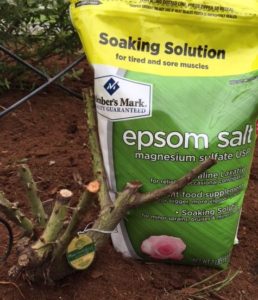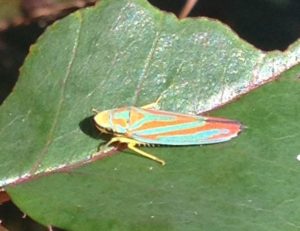Hello Fellow Readers, Earlier this season, my brother Rick from Knoxville, TN, and a dear friend Ruth of Hope, NJ, asked about rose pest remedies and soil requirements to get them off to a good start.
I find roses fussy and hard to keep in their glory. There are spider mites and aphids that often run amok. Never mind the fungus amongst them, like black spot and powdery mildew. Then deer enjoy nibbling, which is odd given their prickly nature. But when roses are in their glory, they indeed are glorious. Plus, their fruit called rose hips, commonly used in tea, are an excellent source of Vitamin C.
Ruth’s mail-order rose dilemma
Ruth purchased three climbing roses by mail order. While two were off to a good start, the third was not. She contacted Jackson & Perkins, who advised a shot of Epsom salt often does the trick, and asked if I had heard of the remedy. Folks use Epsom salt to fertilize plants, usually tomatoes, to promote more abundant fruit or flowers. However, unless a soil test proves a deficiency in magnesium and sulfate (the ingredients of Epsom salt), adding more is irrelevant. Plants can’t take up more than they need. They don’t require much of either, and most often, the soil naturally has plenty of magnesium and sulfate. Still, because they gave a plant guarantee, I suggested Ruth follow their protocol so they’ll make good on replacing them if necessary.
Rick’s rose dilemma was with Eastern tent caterpillars
Brother Rick’s rose dilemma was with Eastern tent caterpillars (Malacosoma americanum). In previous years the campers demolished his potted roses but left his other herbs. Rick admitted he’d used a nasty chemical product as a remedy. I sent him the link to an earlier column about tent caterpillars (titled Diehard Campers ). I advised him to remove the tent or apply Bacillus thuringiensis (Bt), a naturally occurring bacterium in the soil. Or there’s Neem Oil, a natural alternative to synthetic pesticides. Both are safer for the environment and you.
This week I checked on the progress of their rose dilemmas. No surprise, Ruth’s rose didn’t make a comeback. “We told Jackson and Perkins. Now they are out of them, so we are out of luck!”
It turns out Rick took the advice of his big Sis and removed the tent, so his annual caterpillar invasion was preempted without using chemicals. However, he said his roses still look half defoliated with minimal blooms.
I asked that he look closely for tiny brown or green specks, evidence of mites or aphids. None found. However, he came across a colorful green insect we couldn’t identify. Upon closer inspection, he described, “it’s sparking,” which made me laugh. Leave it to an engineer to associate insect activity with electrical currents. Rick quickly hung up the phone to take photos and a video clip. “Maybe it’s not a spark. It kind of looks like he (she?) is shooting a thread?” His next photo was the clear liquid on a decoy leaf of notepaper. “Too cool to disturb her. Even if it’s bad for the rose!”
Garden Dilemmas? AskMaryStone@gmail.com (and now on your favorite Podcast App.)
Rick’s mystery visitor – a Scarlet-and-green leafhopper / Graphocephala coccinea I consulted with my birder buddy Dennis who also knows a lot about insects and plants. He identified Rick’s visitor as a Scarlet & Green Leafhopper. “Cool, isn’t it? It’s found in meadows and gardens. It sucks juices from plants, and it is native.”
Enjoy Rick’s dilemma in Episode 71 of the Garden Dilemmas Podcast:
Did you know? The famous line “Rose is a rose is a rose is a rose,” initially written by Gertrude Stein as part of the 1913 poem “Sacred Emily,” is most understood to mean “things are what they are” — called a proclamation of the law of identity.
Updated 8/28/22





